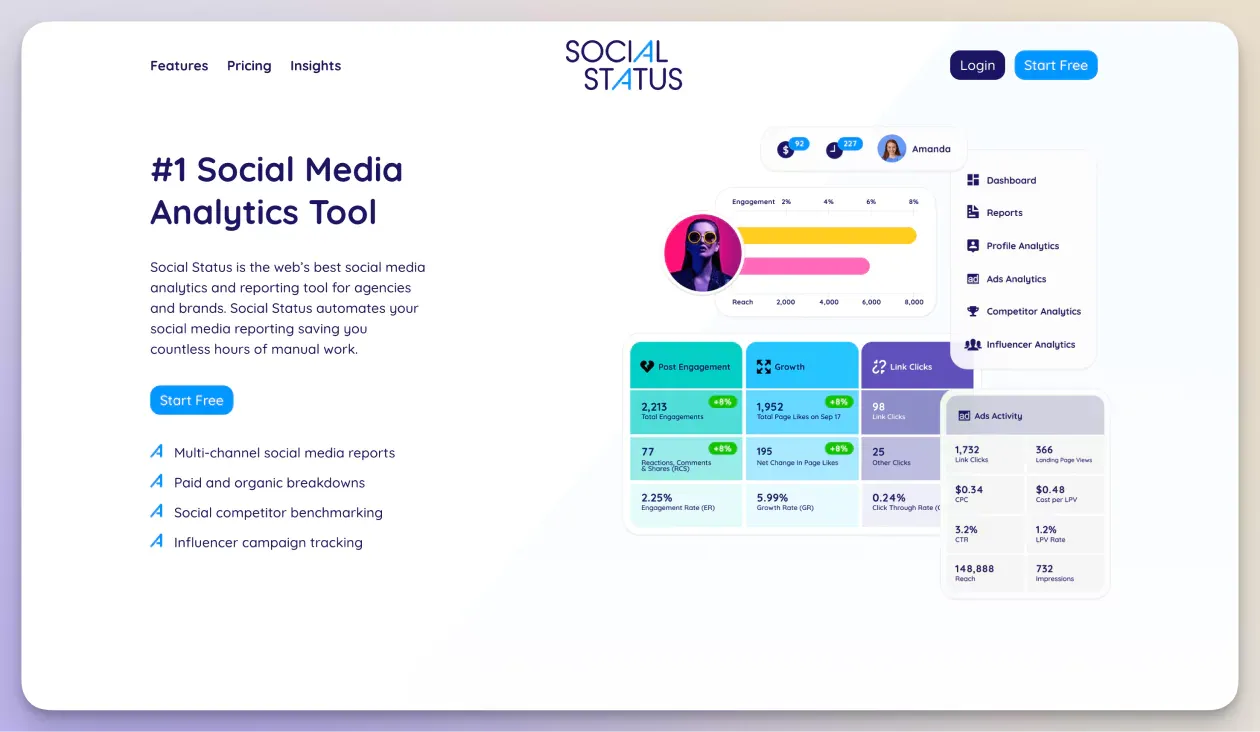Improve Your Information Management with Integrated Analytics Equipment
Check Out Cutting-Edge Analytics for More Intelligent Decision-Making
In a period where data is abundant, the ability to harness cutting-edge analytics is extremely important for organizations seeking to boost decision-making processes. Advanced strategies like device knowing and anticipating analytics not only disclose covert patterns within datasets however likewise supply foresight that can dramatically influence critical choices. As organizations aim to foster a data-driven society, the implementation of real-time data visualization devices becomes a crucial part in changing complex information right into comprehensible insights. The ramifications of these innovations increase crucial questions concerning their useful applications and the possible obstacles that might develop.
The Importance of Data-Driven Decisions
In today's fast-paced organization environment, 90% of executives believe that data-driven decision-making is essential for maintaining an one-upmanship. As organizations increasingly face quick adjustments and intricate obstacles, the capability to utilize information properly has actually come to be vital. Data-driven choices make it possible for businesses to move beyond intuition and presumptions, relying instead on empirical evidence to educate activities and techniques.
The value of data-driven decisions reaches different elements of the company, consisting of functional efficiency, customer complete satisfaction, and market positioning. Organizations that use information analytics can recognize patterns, optimize source appropriation, and boost consumer involvement by tailoring solutions and products to satisfy particular needs. Data-driven methods help with threat monitoring by allowing firms to forecast possible challenges and react proactively.
Integrating information into decision-making procedures cultivates a culture of responsibility and transparency, as stakeholders are much more likely to depend on decisions backed by solid proof. Because of this, organizations that prioritize data-driven decision-making are better geared up to adjust to market fluctuations and exploit on arising chances, inevitably driving sustainable development and success in an increasingly competitive landscape. Analytics. Stressing the significance of data in strategic planning will undoubtedly produce long-term advantages for any kind of company
Trick Techniques in Advanced Analytics

One more crucial method is artificial intelligence, which enables systems to learn from data and boost their performance with time. This iterative process help in recognizing abnormalities and forecasting future fads based upon historical information. Additionally, all-natural language handling (NLP) permits for the evaluation of unstructured data, such as social media sites communications and consumer comments, providing much deeper insights right into customer belief and choices.
Visualization techniques likewise play a critical function in sophisticated analytics. By changing complicated information into user-friendly aesthetic layouts, companies can help with better understanding and quicker decision-making among stakeholders. Finally, optimization strategies assist companies make the most reliable use of their sources by finding the finest possible remedies under given restraints.
Together, these crucial strategies form a robust structure for sophisticated analytics, allowing organizations to navigate the intricacies of contemporary data landscapes successfully.
Predictive Analytics and Its Effect
Predictive analytics offers as a considerable extension of the crucial strategies detailed in sophisticated analytics, leveraging historical data to anticipate future outcomes. By employing statistical formulas and artificial intelligence methodologies, organizations can identify patterns and patterns within their information sets, allowing them to make informed decisions that improve operational effectiveness and drive calculated campaigns.
The effect of predictive analytics is extensive across different sectors, consisting of money, marketing, and healthcare. In the monetary domain name, organizations utilize predictive versions to examine credit history threat, optimize investment profiles, and detect deceitful activities. In healthcare, anticipating analytics help in patient outcome projecting, source allotment, and individualized treatment plans, eventually boosting person treatment.
Moreover, companies utilize anticipating insights to refine advertising strategies, targeting consumers more efficiently and increasing conversion rates. By expecting consumer habits, companies can tailor their offerings, therefore fostering commitment and enhancing consumer experience.
As organizations continue to harness the power of anticipating analytics, they get a competitive side by not only responding to market adjustments however likewise proactively shaping their techniques based upon awaited fads. This forward-looking approach ultimately transforms information right into a calculated asset, driving sustainable growth and development.
Real-Time Information Visualization Tools
Various companies are significantly transforming to real-time data visualization tools to improve their decision-making processes. These tools allow stakeholders to analyze complex datasets promptly and efficiently, promoting prompt reactions to emerging fads and challenges. By presenting information in instinctive formats such as dashboards, graphs, and interactive charts, organizations can transform raw data into actionable insights.
Real-time information visualization devices enable the constant surveillance of key performance indicators (KPIs), guaranteeing that decision-makers are always notified concerning the existing state of procedures. This immediacy helps companies determine abnormalities, anticipate prospective concerns, and confiscate possibilities as they emerge. Moreover, using these tools fosters collaboration across divisions, as shared visualizations check over here advertise a linked moved here understanding of information amongst team members.
As organizations significantly rely on data-driven strategies, the adoption of real-time visualization devices ends up being vital. With improvements in innovation, these tools have actually come to be a lot more user-friendly and accessible, enabling non-technical customers to take advantage of data successfully. Real-time information visualization not just improves operational performance yet also encourages companies to make informed choices that drive development and technology.
Implementing Analytics for Development

Organizations should purchase the right tools and innovations that assist in information collection, storage space, and analysis. This includes cloud-based platforms that supply scalability and versatility, making it possible for groups to access real-time data effortlessly (Analytics). Fostering a data-driven culture is crucial; workers at all levels should be trained to translate and utilize analytics efficiently.

Conclusion
To conclude, the integration of innovative analytics into business strategies is vital for fostering notified decision-making. By leveraging methods such as maker learning and data mining, services can uncover vital understandings and projection emerging patterns. Real-time data visualization enhances the interpretability of complex datasets, promoting cross-departmental cooperation. Ultimately, growing a data-driven culture and investing in proper modern technologies will significantly enhance functional efficiency, customer contentment, and affordable placing in an increasingly vibrant market landscape.
In a period where information is abundant, the ability to harness advanced analytics is vital for companies seeking to improve decision-making processes. Organizations that use information analytics can determine patterns, enhance resource allotment, and improve customer engagement by tailoring solutions and items to satisfy particular needs.Advanced analytics incorporates a range of essential techniques that empower companies to remove purposeful understandings from complicated data collections. Among these strategies, information mining stands out as a powerful tool for revealing patterns and partnerships within huge volumes of data. By offering information in user-friendly styles such as dashboards, charts, and interactive charts, companies can change raw information into workable insights.